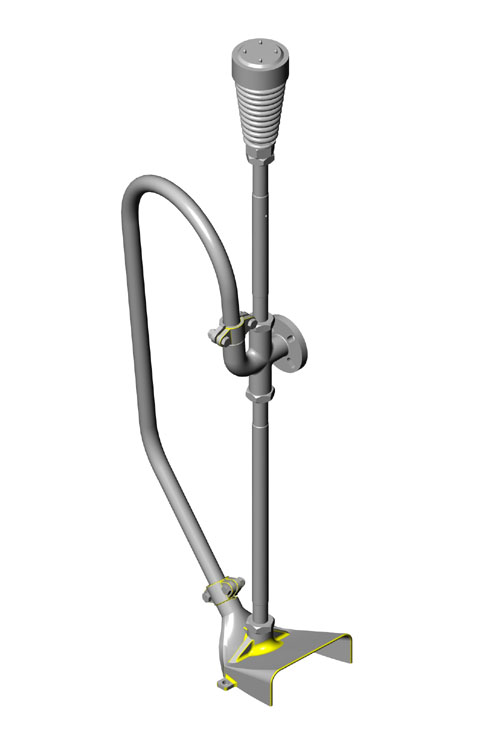Drum Dryer Condensate Removal, Heat Transfer, and Energy Recovery
 Project
Project
Rebuild of a drum dryer syphon, rotary joint, and associated steam and condensate system used in the food industry for the manufacturing of potato flakes.
Process
The drum dryer is fed with live steam and operates at 8 barG steam pressure. Heat is transferred from hot, condensing steam inside the drum dryer to the cooler product passing over the rotating drum. This evaporates moisture from the incoming slurry and drying the product for onward processing.
Operation and Configuration Before Kadant Rebuild
Steam was fed into the dryer under a two-stage pressure reduction control system. This took the steam from high-pressure to the 8 barG drum operating pressure. The steam condensed within the drum dryer and drained from the dryer by two simple bent-pipe stationary syphons which entered the cylinder at either end of the drum dryer through dual-flow rotary joints. The condensate from the drum dryer drained via a steam trap from the dryer to a flash steam vessel and this condensate was then drained to an atmospheric vessel.
There were several problems with this configuration.
First, draining hot, higher-pressure condensate to a vessel at lower pressure creates flash steam as the heat energy contained within the condensate effectively boils a proportion of the condensate and converts it to steam. When the lower pressure vessel is vented to atmosphere the steam is lost along with all its energy. Also, the design of the simple bent pipe stationary syphons was not robust. The clearance at the syphon tip was not always maintained due to the syphons moving within the drum, causing inconsistent drainage. This movement of the syphon also increases the possibility of syphon failure if it contacts the internal surface of the dryer. As a result, the syphon clearances are set quite high, leading to more condensate being inside the drum dryer and so, reducing the effectiveness of heat transfer to the product. Air evacuation from the drum dryer was also poor with the system, due to the installation of the steam trap and its poor air handling capability. The build-up of air within heat transfer equipment reduces both the effective temperature of the steam and affects the uniformity of the heat transfer profile across the width of the rotating drum.
Kadant’s Solution
-
The two-stage pressure reduction was modernized to a single stage pressure reduction using a high-quality pressure control valve capable of accurately controlling with high differential pressures. This modernized the system to reduce future maintenance.
-
A new flash recovery system was designed to eliminate the flash steam loss to atmosphere. The flash steam was recovered to a low-pressure user to reduce the amount of live steam required in the lower pressure system. This reduced total steam use and boiler make-up water usage.
-
A high-capacity scoop syphon was installed to replace the two bent pipe syphons. This high-capacity scoop rotates with the dryer drum. The four scoop buckets are installed at 90 degrees to each other, so they continuously evacuate the condensate, draining it from the drum without the need for differential pressure. This improved drainage of the condensate and reduced the amount of equipment installed on the drum, further reducing future maintenance requirements.
-
The steam trap was removed and a new drainage system with modern, automatic air removal control was installed in the condensate system. This automated process ensured the correct evacuation of air from the drum on start-up, decreasing warm-up times, and improving heat transfer through the drum.
Energy Recovery Benefits
The energy saving from the above system being implemented was over 2.9 million kWh / year, worth approximately €86,000 per year in saved energy and a CO2 reduction of almost 160 ton/year.
PLEASE NOTE:
The energy costs in the above benefits for conditions in the United Kingdom. The costs in other countries may be different.